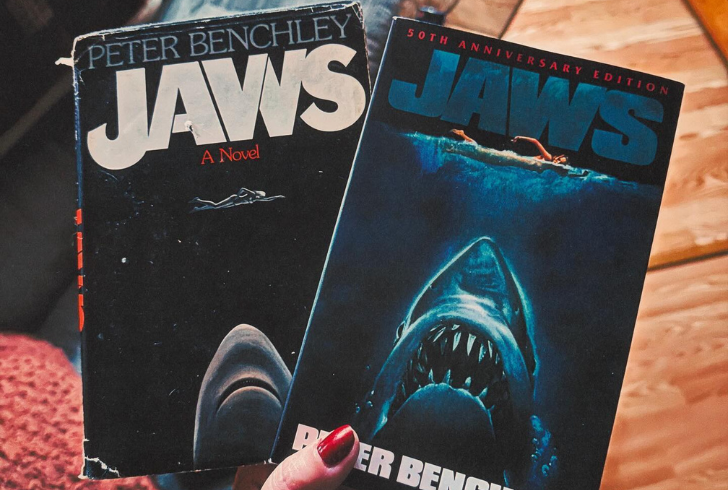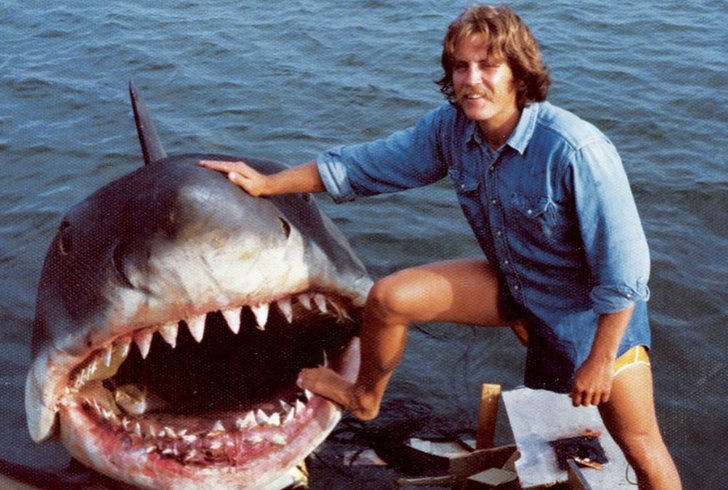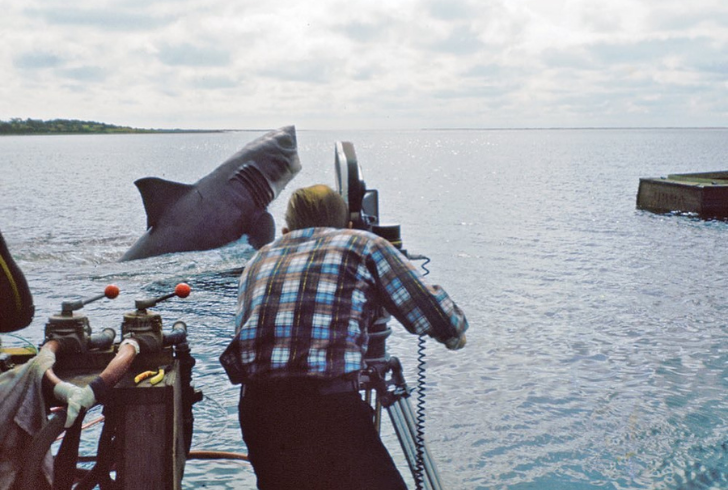When “Jaws” hit theaters in 1975, it changed the movie industry forever. As the first true summer blockbuster, it created a blueprint for high-stakes filmmaking that still influences Hollywood today. Half a century later, the legacy of “Jaws” remains as strong as ever.
Here are some fascinating facts about the film that even die-hard fans might not know.
The Story Behind the Story
The Novel Was Inspired by a Real-Life Event
Before “Jaws” became a cinematic phenomenon, it was a best-selling novel written by Peter Benchley. The inspiration for the book came from a real-life fisherman named Frank Mundus, who caught a massive 4,500-pound great white shark off the coast of Long Island in 1964. Benchley used Mundus as a model for the character of Quint, the hardened shark hunter in the film.

The Film Rights Were Purchased Before the Book’s Release
Hollywood saw potential in “Jaws” before it even hit bookshelves. After reading the manuscript, Producers Richard Zanuck and David Brown secured the movie rights for $150,000. Their gamble paid off when the book became a sensation, and the movie went on to break records.
The Making of a Classic
A Young Director Took the Helm
At just 26 years old, Steven Spielberg was handed the reins of “Jaws.” Although he had only directed one feature-length film before, his vision for the project set the stage for his legendary career. His commitment to realism, suspense, and groundbreaking filmmaking techniques cemented his reputation as one of the greatest directors in history.
Filming in the Open Ocean Was a Nightmare
Unlike most movies at the time, which relied on studio tanks for water scenes, Spielberg insisted on filming in the Atlantic Ocean off Martha’s Vineyard. This decision led to months of production delays, sinking equipment, and an ever-growing budget. While challenging, the decision ultimately added an unparalleled level of authenticity to the film.
The Challenges of Bringing a Shark to Life
The Mechanical Shark Had a Name

The animatronic shark, known to the crew as “Bruce,” was named after Spielberg’s lawyer. There were three versions of Bruce, each designed for different shots. However, they frequently malfunctioned, leading to unplanned rewrites that actually improved the film’s suspense by keeping the shark hidden for much of the movie.
Saltwater Wreaked Havoc on Production
One major issue with Bruce was that he wasn’t built to withstand saltwater. Corrosion and mechanical failures plagued the production, forcing the crew to constantly repair the shark. In some cases, they had to replace its rubber skin weekly due to sun exposure and water damage.
Iconic Moments and Behind-the-Scenes Secrets
The Most Famous Line Was Improvised
One of the most memorable lines in the film, “You’re gonna need a bigger boat,” wasn’t scripted. Roy Scheider, who played Chief Brody, came up with the line on set. It quickly became one of the most quoted phrases in movie history.
Spielberg’s Subtle Cameos
Steven Spielberg added his personal touch to the film in unexpected ways. You can hear his voice as the dispatcher on the radio. His two cocker spaniels, Elmer and Zalman, also appear as Brody’s dogs.
The Orca Sinking Incident
The film’s iconic boat, the Orca, sank during production. This happened because of a miscalculation while towing the boat at high speed. Despite this setback, the crew saved crucial film reels. They kept the reels submerged in buckets of seawater until they reached the processing lab, preventing saltwater damage.
A Legacy That Endures
“Jaws” Redefined Summer Blockbusters

Before “Jaws,” summer wasn’t considered prime time for major film releases. That changed when it shattered box office records, earning over $260 million domestically during its initial run. With additional re-releases, its earnings have climbed to nearly $478 million globally.
The Film’s Influence on Pop Culture
From inspiring filmmakers to sparking an ongoing fascination with sharks, “Jaws” left a lasting impact on entertainment. In 2001, it was selected for preservation in the National Film Registry for its cultural significance, ensuring its legacy for future generations.
A Play Inspired by the Troubled Production
The difficulties behind the making of “Jaws” were so legendary that they inspired a play, “The Shark Is Broken,” which dramatizes the tensions and mishaps that plagued the set.
Fifty years after its release, “Jaws” remains a masterpiece of suspense, storytelling, and cinematic innovation. Whether you’re a longtime fan or just discovering it, the film’s impact continues to be felt across Hollywood and beyond.

